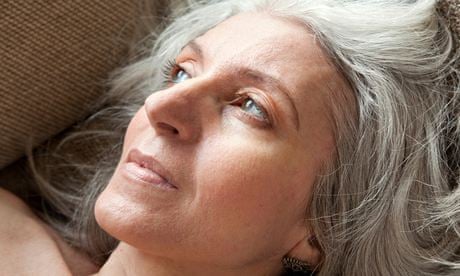Tips on "resting your mind" are increasingly prominent in western culture's non-stop barrage of lifestyle instructions. We are exhorted to give our brains downtime, and reminded of the benefits of yoga, mindfulness and transcendental meditation. In an economic system preoccupied with squeezing value from employees' minds as well as bodies, rest, we are told, can promote creative insights rather than be purely a sign of lost productivity.
But what are the criteria for judging if a mind is at rest? What accounts for the unevenness in people's experiences of mental "rest"? And can we broaden the repertoire of practices that people use – beyond mindfulness training and yoga – to find rest in their everyday lives?
One arena in which debates over what "rest" means for the mind have been particularly lively is neuroscience. Until recently, if you were to volunteer for a cognitive neuroscience experiment, the chances are you would be slid, supine, into a magnetic resonance imaging (MRI) scanner, would come face to face with a simple cross-hair – and would be told to "do nothing" in between the psychological tasks you would be asked to carry out. This cross-hair is the way that cognitive neuroscientists traditionally access the brain and mind's state of rest.
Little over a decade ago, mental activity during a phase of cross-hair fixation was treated simply as the baseline. The assumption was that the mind would rev up and out of its idling state in order to complete the tasks it was being set, and its activity could then be measured against this dormant "baseline" state.
But in the past decade this view of the resting state has undergone a profound transformation. Neuroscientists have demonstrated that different parts of the brain display remarkably co-ordinated patterns of activity "at rest", and that disparate regions in the brain are consistently more, rather than less, active when people are told to "do nothing". Data and visualisation techniques from resting-state cognitive neuroscientists, such as my collaborator, Daniel Margulies, have allowed the slow rhythms of these highly organised brain dynamics to be made visible and displayed as maps of brain connectivity. In a few short years, a brain that is "doing nothing" has become, for neuroscientists, a whole lot more complicated, interesting and, frankly, busy. Rest, at least in relation to the space inside our skulls, isn't what it used to be.
As you might observe, your own mental experiences while "doing nothing" give the lie to the assumption that the mind shuts up shop when not focused on the world outside. The mind in so-called states of rest might be described as doing a whole host of complex things – whether it is engaged in "a meal at which images are eaten" (to use WH Auden's description of the daydream) or in building "air castles undisturbed" (to use Washington Irving's account of reverie).
But it has been hard to incorporate these rich subjective accounts of the mind's activity when unengaged by the outside world into scientific models. After all, as soon as one attempts to probe the activity of mind-wandering or daydreaming, one has disturbed the very thing one is trying to study.
Nonetheless, psychological research on "spontaneous cognition" has in the past decade been reinvigorated. At the heart of these efforts are researchers such as Jonathan Smallwood, who has attempted to bring order to the fuzzy chaos that is the daydreaming mind. For Smallwood, the daydreaming state – far from being simply a lapse of attention, as commonly assumed by many psychologists over many years – allows our species to transcend the here and now. It is therefore invaluable for important psychological attributes such as creativity, happiness and planning our future. In the space of a few years, then, understandings of what the brain is and does "at rest" have been transformed. Gone are connotations of idleness and stasis, to be replaced by an emphasis on industry, productivity and forward planning.
But there remain at least two big challenges if we are to understand the complex neurological and psychic attributes of mental states of "rest". First, to understand the relationship between brain dynamics and corresponding inner experience – a scientific effort that is nothing less than an attempt to characterise the fugitive movements and mechanisms of thought. Second, to really figure out what the relationship is between the state of rest that characterises the strange, constricted experience of being inside an MRI scanner, and people's everyday, varied and unequal experiences of mental and bodily rest. To make progress on either of these questions, we need far richer descriptions and models of what actually goes on in minds – and, of course, bodies – during states of rest than we have now.
Are the new "busier" models of mental rest that are being advanced in neuroscience and psychology drawing from changing experiences of "rest" in people's everyday lives? Current models of the resting mind need to incorporate insights from people's multifaceted experiences of rest, which undoubtedly extend well beyond currently favoured practices for "stilling the mind" such as meditation.
It's worth recalling that rest is commonly defined by what it isn't. In a dictionary, for example, you'll find it defined as the absence of activity, labour, exertion, disturbance and movement. That minds "at rest" are now, at least in certain quarters, characterised precisely by their activity, labour, exertion and movement, poses for us all important scientific and social questions about this commonly hidden but vital aspect of our lives.


